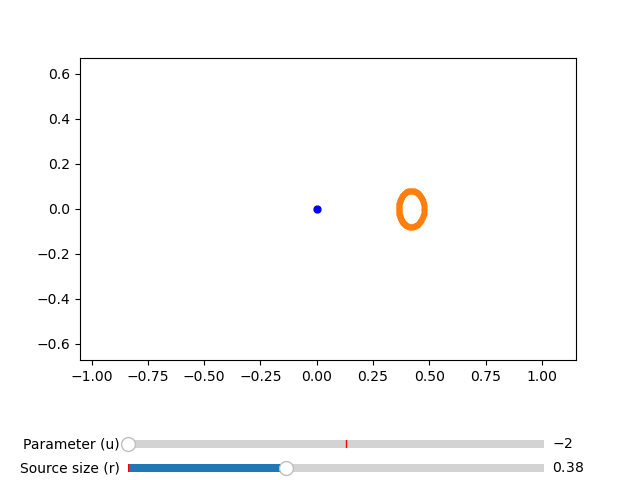
Ongoing Research:
+ Gravitational microlensing and the quest for Dark matter in the Universe
Cosmological observations tell us that 85% of matter in the universe is in the form of cold (non-relativistic), non-baryonic stuff. This matter doesn’t seem to interact with light (i.e., electromagnetic interaction), which is why we call it dark matter.
Dark matter is the building block of the universe; without it, life would not have been possible because the structure formation in the universe requires dark matter. Dark matter provides the gravitational potential and keeps the ordinary matter from rushing apart due to dark energy. Note that the dark energy and dark matter are completely different beasts, i.e., they are not the same. Dark energy is responsible for the accelerated expansion of the universe; in some sense, it behaves like a negative pressure. Now the question is, how come the dark matter keeps the ordinary matter together against dark energy? The answer, as you might have guessed, is gravity.
As far as our current understanding is concerned, dark matter mainly interacts via gravitational interactions. That's how we discovered that dark matter exists in the first place. There is strong evidence/hints from astrophysics, which opened up a new window for the indirect detection aspect of dark matter search.
Some direct detection searches assume that there has to be some interaction of dark matter with standard model particles; however, the interaction cross section has to be small.
Long story short, after the Big Bang, the universe was filled with photons, neutrinos, ordinary matter (SM particles, i.e., quarks and gluons), and dark matter and dark energy. As the universe was expanding, it rapidly cooled down, i.e., the temperature dropped enough, which allowed quarks and gluons to condense into nucleons. These nucleons combined with electrons to form the first hydrogen gas. The dark matter provided the deep gravitational potential well so that a large amount of hydrogen could fall into the well and form stars, galaxies, and clusters of galaxies as we see them today. This explains, on a planet like earth revolving around the star known as sun the life would not have been possible without dark matter.
What do we know and what we don't (known, unknowns, and known unknowns)
Nature has given us strong hints about the existence of dark matter in the universe. One of the smoking gun evidence is the Bullet cluster. There are various proposed dark matter candidates that span over several orders of magnitude mass window from ultralight to ultra heavy, e.g., axions, WIMPs, Primordial blackholes, etc. We do not know the microscopic identity of dark matter, i.e., what the fundamental or composite particles are that make up dark matter.
This research
The focus of this research is the super heavy dark matter candidate, a primordial blackhole.
Primordial blackholes (PBHs) form due to the collapse of large density perturbations during the radiation-dominated epoch. When a region becomes sufficiently overdense and enters the horizon, gravity rapidly dominates over pressure, which results in a collapse, and under the right conditions, it forms a black hole. The generation of large density perturbations is done by inflation. Other early universe processes which can produce overdensity include the collapse of cosmic string loops, the collision of bubbles from the phase transition, etc.

to be updated...
+ Thermal Instability in the Galactic Outflows
In order to understand galaxy formation, one needs to first understand inflows and outflows! From the observations, we know that there is multiphase and clumpy gas present in galactic outflows such as M82. The question is, how do we explain the existence of cool clumps in the galactic outflows? That's where thermal instability comes in. In brief, it refers to the condensation of gas purely due to thermodynamics, not gravitation, as the radiation pressure would be much higher than the gravitational potential energy density.
Thermal Instability: Small density perturbations cause a runaway heating and cooling, which result in the condensation of diffuse gas in cooler regions. (assuming the generalised heat loss function is zero)
In galactic outflows due to the expansion of the gas, the number density of atoms reduces, which leads to a longer cooling time. In this sense, there is a coupling between the cooling time scale and the expansion time scale. So the problem is to study this coupling.
(to be updated)
+ GLoW (Gravitational Lensing of Waves)
Paper -- https://arxiv.org/abs/2409.04606
GitHub Repo -- https://github.com/miguelzuma/GLoW_public
Documentation/ReadMe -- https://miguelzuma.github.io/GLoW_public/index.html